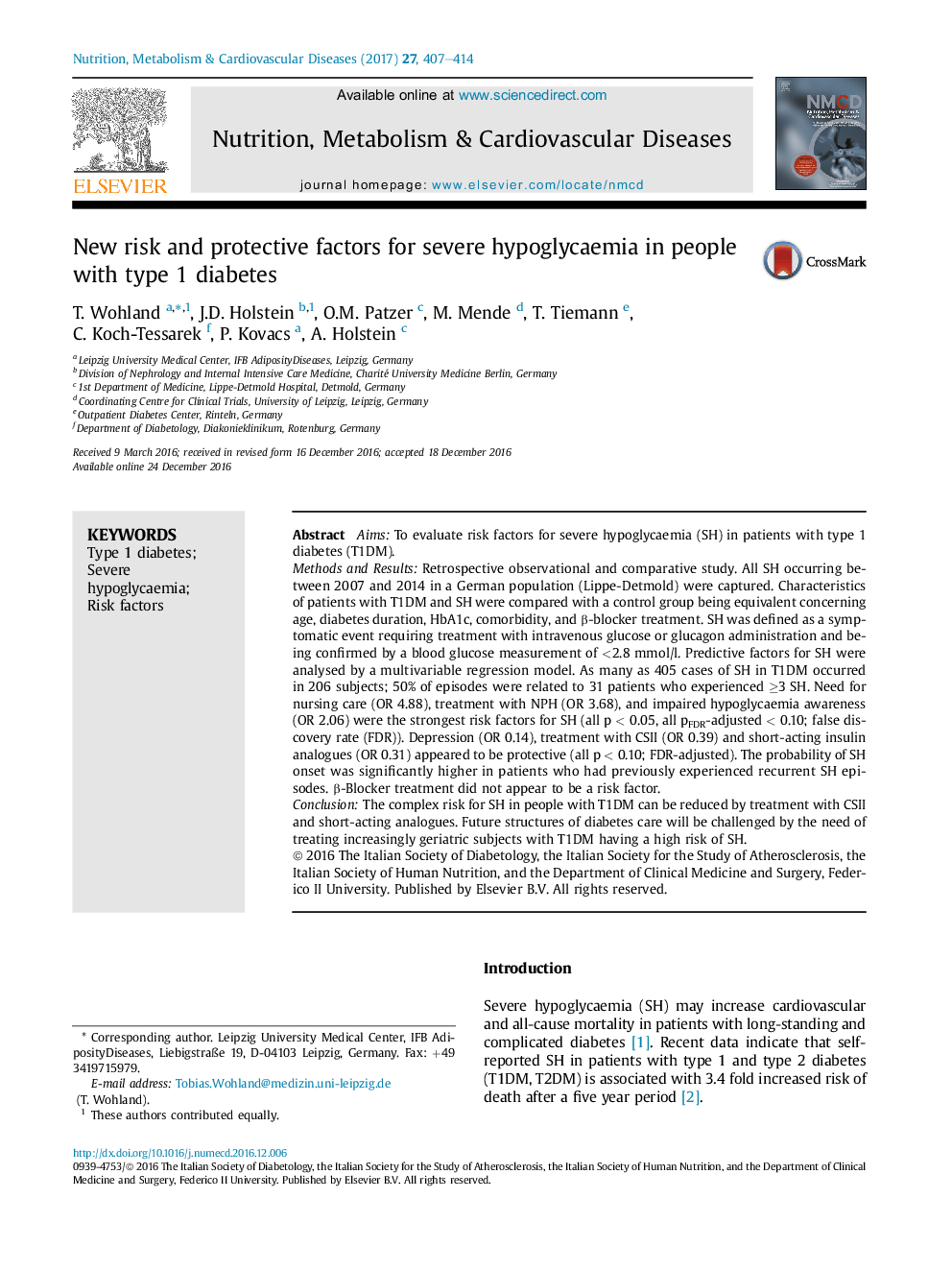| کد مقاله | کد نشریه | سال انتشار | مقاله انگلیسی | نسخه تمام متن |
|---|---|---|---|---|
| 5619042 | 1406050 | 2017 | 8 صفحه PDF | دانلود رایگان |
- People with T1DM, particularly those with recurrent episodes, showed a complex risk profile for severe hypoglycaemia (SH).
- Need for nursing care, impaired hypoglycaemia awareness, and previous episodes of SH were the strongest predictors for SH.
- Our limited data suggest that Ã-blocker treatment did not appear to be a risk factor for SH.
- Depression, treatment with CSII, and use of short-acting analogues appeared to be protective against SH.
- Future structures of diabetes care will be challenged to treat increasingly geriatric subjects with T1DM and high risk of SH.
AimsTo evaluate risk factors for severe hypoglycaemia (SH) in patients with type 1 diabetes (T1DM).Methods and ResultsRetrospective observational and comparative study. All SH occurring between 2007 and 2014 in a German population (Lippe-Detmold) were captured. Characteristics of patients with T1DM and SH were compared with a control group being equivalent concerning age, diabetes duration, HbA1c, comorbidity, and β-blocker treatment. SH was defined as a symptomatic event requiring treatment with intravenous glucose or glucagon administration and being confirmed by a blood glucose measurement of <2.8 mmol/l. Predictive factors for SH were analysed by a multivariable regression model. As many as 405 cases of SH in T1DM occurred in 206 subjects; 50% of episodes were related to 31 patients who experienced â¥3 SH. Need for nursing care (OR 4.88), treatment with NPH (OR 3.68), and impaired hypoglycaemia awareness (OR 2.06) were the strongest risk factors for SH (all p < 0.05, all pFDR-adjusted < 0.10; false discovery rate (FDR)). Depression (OR 0.14), treatment with CSII (OR 0.39) and short-acting insulin analogues (OR 0.31) appeared to be protective (all p < 0.10; FDR-adjusted). The probability of SH onset was significantly higher in patients who had previously experienced recurrent SH episodes. β-Blocker treatment did not appear to be a risk factor.ConclusionThe complex risk for SH in people with T1DM can be reduced by treatment with CSII and short-acting analogues. Future structures of diabetes care will be challenged by the need of treating increasingly geriatric subjects with T1DM having a high risk of SH.
Journal: Nutrition, Metabolism and Cardiovascular Diseases - Volume 27, Issue 5, May 2017, Pages 407-414
